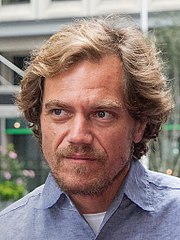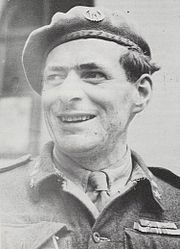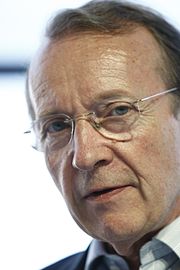Design
Design
Personality
Chart Properties
Your Cross represents the specific theme of your life. This cross embodies your unique potential & the lessons you're here to learn, providing a roadmap to fulfilling your life purpose.
We use the UTC birth time and date to do the calculations required to generate your Human Design chart.
Buy Tokens
Pay as you use, no expiry and no subscription required.Prompt Ideas
Get inspired with some epic prompt ideas.Manuel Noriega's Biography
Panamanian strongman general and dictator who controls law enforcement, immigration and customs. In 1989, U.S. federal prosecutors brought down 12 indictments against him. He was accused by the U.S. of taking at least $4.6 million in payoffs from the Medellin cartel of Columbia to protect cocaine shipments.
Noriega began a relationship with the CIA in 1960 when, as a young cadet at Peru’s Chorillos Military Academy, he agreed to feed the U.S. Defense Intelligence Agency information on leftist students. Soon after he was drawing a monthly retainer.
When Panamanian leader Omar Torrijos established an intelligence capability, Torrijos picked Noriega, then his transit police chief, to oversee the intelligence-gathering operation and his past experience at the military academy was a plus. He studied intelligence and counter-intelligence under American officers at Ft. Gulick in Panama in July 1967, psychological operations at Ft. Bragg in September 1967, and then returned to the School of the Americas in Panama for a two-month course in military intelligence for officers. His instructors remember that it was psychological warfare that interested him the most. On 6/17/1971, President Nixon told Congress they had gathered information that Torrijos and his spy chief, Noriega, were facilitating the heroin trade through Panamanian embassies, consulates, airports and customs offices in the Far East and the Americas. By the mid-’70s he was becoming known as “rent-a-colonel” and was known as a double agent.
In 1976 Noriega, then head of Panamanian intelligence, bribed U.S. Army personnel in Panama to obtain the electronic intercepts by the U.S. National Security Agency. NSA officials, who regarded the case as a serious breach of security, were incensed when the Army declined to prosecute the soldiers involved. Noriega met with then CIA director, George Bush, in December 1976. Noriega was then dropped from the CIA in 1977 by the Carter administration. Once the Sandinista’s took over Nicaragua in 1979, he provided the most regular and reliable intelligence on them. He had begun helping the Reagan White House with its Contra war against the Sandinista’s early in the 1980s by allowing the Israelis to use Panama as a conduit for funds and weapons. By 1981 he was back on their payroll at an annual rate of $185,000 paid into his private account at the Bank for Credit and Commerce International.
During the mid-’70s Noriega had watched the developments of drug traffickers in Colombia. As they grew richer and bolder, Noriega’s interest also grew. In early 1980 the former Colombian President Alfonso Lopez Michelsen decided he wanted the presidency again and he wanted the backing of the M-19, an emerging force of leftist Colombian guerrillas supported by Fidel Castro. Noriega handled the meeting for negotiations between Michelsen and Jaime Bateman, the head of the M-19 guerrilla group. The meeting took place in Panama with Noriega making the introductions and providing whatever was needed. The M-19 agreed to form a political party to back Michelsen. As Noriega became a bigger player every day, with closer links both to the Cubans and to their favorite revolutionaries it soon put him in the middle of the war between the M-19 and the drug bosses. When Marta Nieves Ochoa, the youngest sister of drug boss Jorge Ochoa, was kidnapped by the M-19 guerrillas on 11/12/1981, 100 guerrillas were killed or turned in. The M-19 soon wanted peace. Noriega arranged the meeting and the Ochoas flew to Panama to negotiate with the M-19. On 2/17/1982 Marta Nieves was released unharmed.
Noriega was now a valued contact that the Cartel wanted to keep. He had been efficient, discreet and was trusted by both sides. In June 1982 a deal was made to fly drugs through Panama en route from Colombia to the U.S. Noriega received $100,000 for the first drug flight, $150,000 for the second and $200,000 for the third. The partnership grew steadily but turned suddenly sour in 1984. Noriega had dared to order his men to raid Pablo Escobar’s new cocaine processing facility in Panama’s Darien jungle on 5/21/1984. Noriega was engaged in a balancing act between the growing needs of the cartel in Panama and increased requests for cooperation from the DEA. On 3/06/1985 a series of explosions rocked the military headquarters complex in Managua, Nicaragua. He had helped not only by providing the intelligence to map out the operation, but demolition experts to set and trigger the explosives as well. Noriega was offering American intelligence a minimum of help and extracting from it maximum protection. He was known to be trading secrets, arms and technology with the Sandinista’s, the contras, the East bloc, the Cubans, the M-19 terrorists in Colombia, the Palestinians, Libyans and Syrians.
In 1988 he was indicted on money laundering and drug trafficking in a Miami courtroom, but he remained free. On 12/20/1989 American troops were put into combat in Panama City to apprehend Noriega and he was deposed in the coup. After a massive five day manhunt, he turned himself in on 12/24/1989 to the Vatican Embassy. On 1/3/1990 he left the sanctuary offered by the Vatican Embassy and surrendered himself to U.S. troops. He was convicted on 4/09/1992 of collaborating with the world’s most notorious drug lords to smuggle cocaine into the U.S. He was sentenced to 40 years in a federal penitentiary. He spent nearly nine years by himself in a two-cell suite at a federal prison near Miami since a Miami judge granted him special status as a prisoner of war. On 3/04/1999 a federal judge reduced Noriega’s prison sentence to 30 years, meaning the former dictator could be released as early as the year 2000.
Felicidad, Noriega’s wife, had become fatter and meaner over the years of their marriage. Her extravagant shopping trips to Europe and her lording it over diplomats’ wives became legendary. Noriega feared nothing, not even the Medellin Cartel, as much as his wife’s rage. Panamanians even believe Felicidad pushed one of Noriega’s mistresses out a window to her death. The woman’s death had been ruled a suicide, but Felicidad was said to have been the last to see her alone.
Link to Wikipedia biography
Manuel Noriega
Your Cross represents the specific theme of your life. This cross embodies your unique potential & the lessons you're here to learn, providing a roadmap to fulfilling your life purpose.
We use the UTC birth time and date to do the calculations required to generate your Human Design chart.









